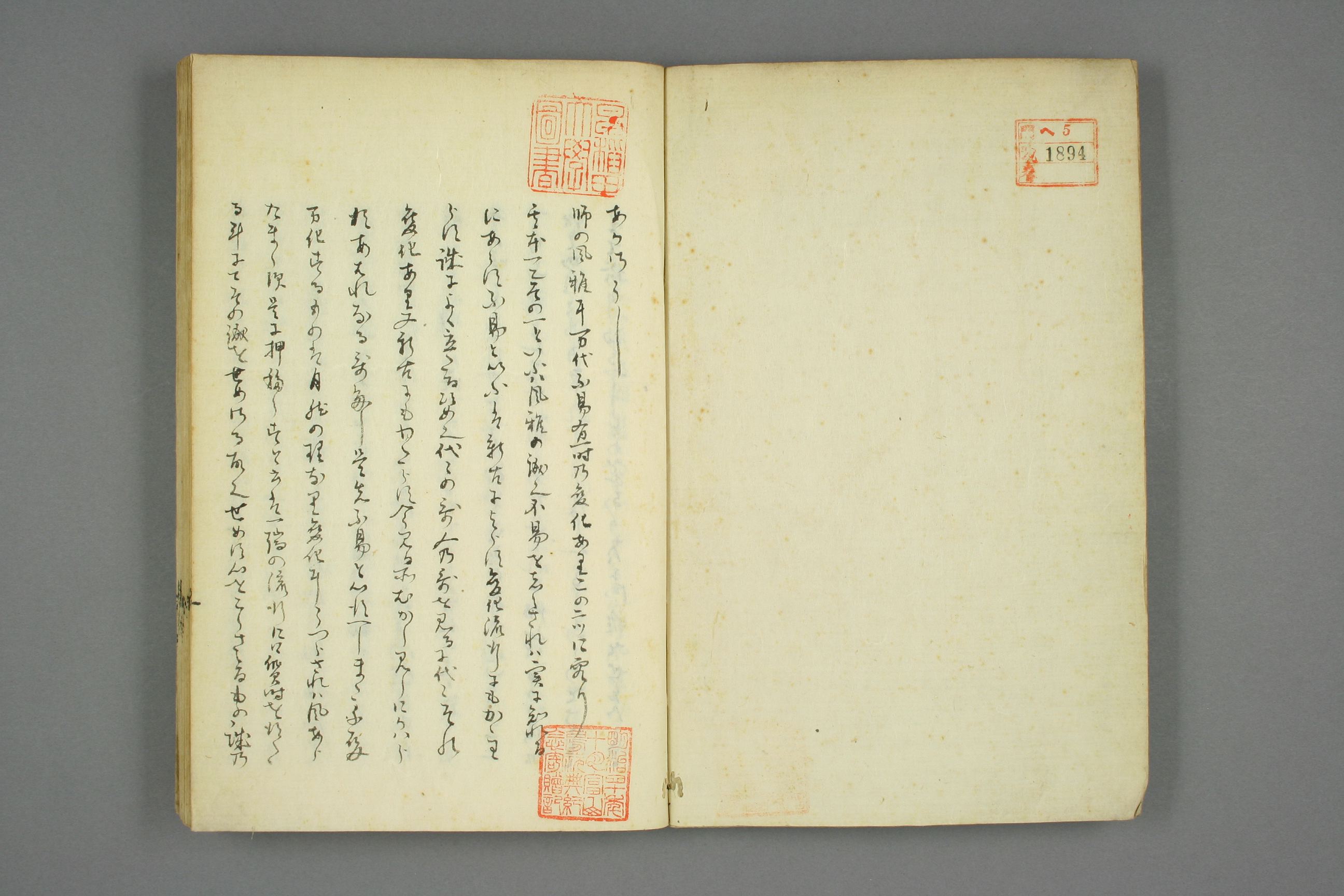Our Teacher’s haikai (fûga 風雅) possesses both the changelessness of countless aeons and the change of a single moment; looking carefully into each reveals that they both share a single foundation. This single foundation is called the aesthetic of authenticity (fûga no makoto 風雅の誠). If you are ignorant of changelessness, you cannot truly understand haikai. Changelessness means the quality of verse that is established by sincerely seeking aesthetic authenticity that is apart from being either new or old, and is of course not influenced by changeableness or fashions.
If you read the verse of waka poets over the generations, you see that each era had its own changes. There are many waka poems that are evocative regardless of whether they are new or old, or whether their readers are those of the present day or those of the past. It is important to understand this aspect of changelessness.
 |
| Akazôshi at Waseda University Library |
Regardless of how many changes there are in the future, the aesthetic authenticity of all change belongs to our Teacher’s haikai. He said, “Do not for a minute swallow the dribblings of the ancients. All things renew themselves like the four seasons progressing forward; haikai is like everything else in this regard.”
When our Teacher was on his deathbed, a disciple asked him about the future of haikai (fûga). Our Teacher said, “There have been numerous stylistic changes since I embarked on this Path. However, we can speak of them overall in terms of three: standard 真, semi-cursive 行, and cursive 草. Of those three, I have not yet achieved mastery of one or two.” Among the light-hearted remarks that he made during his life, something he said many times was, “The rice sack of haikai has only barely been opened.”